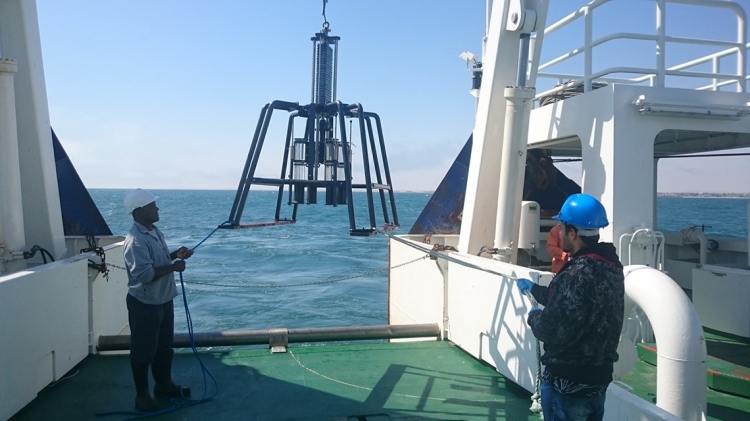The first-ever comprehensive study on the concentration of radionuclides and trace elements in Namibia’s coastal waters revealed that while radionuclide levels are very low, there is an indication of higher than usual concentration of certain trace elements. Further study is required to determine whether these are the result of human activity along the coast or are due to the underlying geology, according to a scientific report delivered by the IAEA to the Government of Namibia in late 2017, based on research carried out at the Government’s request.
“The IAEA report provides excellent information about the current status and can be used as the basis for future monitoring activities,” said Axel Tibinyane, Director of Namibia’s National Radiation Protection Authority. “As marine resources contribute significantly to our national development, it is imperative that they be used sustainably. The report will help us do that.”
Following this preliminary research, the IAEA will continue to provide support to the Government to gain better insight into the high trace element levels.
In addition to the country’s increasing population, uranium, gold and diamond mining, as well as industrial activity, are on the rise and there is a growing interest in seabed mining for phosphates. Namibia is among the world’s top five uranium producers. To assess any impact on the environment of this increased level of human activity, a baseline needs to be established, as some of these undertakings could result in increased levels of radionuclides and trace elements. The data in the report can provide such a baseline.
“This project is the first of its kind and has provided new information on the Namibian shelf,” said Deon Louw, the marine scientist in charge of the study at Namibia’s Ministry of Fisheries and Marine Resources. “We need this knowledge to monitor and protect our marine ecosystem as human activity continues to rise.”
Increased coastal activities mean that new regulations are needed to monitor and manage natural and human-caused (or anthropogenic) radionuclides and trace elements that may contaminate the marine ecosystem, with potential impact on seafood, local populations and the economy.
Namibia’s coastal waters support a rich biodiversity and stretch along the south Atlantic’s turbulent Benguela current for over 1500 kilometres. Much of the coastline is a marine protected area, which is considered unpolluted. It is part of the northern Benguela large marine ecosystem — one of the most productive coastal ecosystems in the world — and supports valuable fisheries and mariculture industries. It is a highly dynamic environment: strong winds, seething currents, and underwater sulphur eruptions surround rich stocks of fish, plankton, and other marine life, including the world’s largest bacteria — visible to the naked eye.
Despite all this activity, little was known about Namibia’s levels of marine radioactivity and trace elements until now.
The study
At the request of the Ministry of Fisheries and Marine Resources, in 2014 the IAEA began collecting a diverse range of marine samples off the coast. Over 500 samples were gathered, including sediment, seawater, fish, mussels and seaweed. Several thousand measurements were performed on the samples. More than 40 researchers from 11 institutions in six countries participated in the research project.
In addition to providing baseline measurements for ongoing pollution assessment and regulation, radionuclides and trace metal isotopes can serve as tracers to better understand oceanographic and pollution processes (see Studying the oceans through isotopes). The study of lead isotopes, for example, can help assess whether the lead is present naturally or as a result of human activities. Lead’s isotopic signature can also provide information on the sources of pollutants.
“This research not only helps Namibia, but will also continue to add international scientific value by improving knowledge of global patterns of marine pollution,” said Martina Rožmarić, a research scientist at the IAEA Environment Laboratories. “In studying the presence of natural and anthropogenic radionuclides and trace elements, such as lead, mercury, copper, and cadmium, off Namibia’s seaboard, we are filling in a critical knowledge gap on the world map.”
As marine resources contribute significantly to our national development, it is imperative that they be used sustainably.




